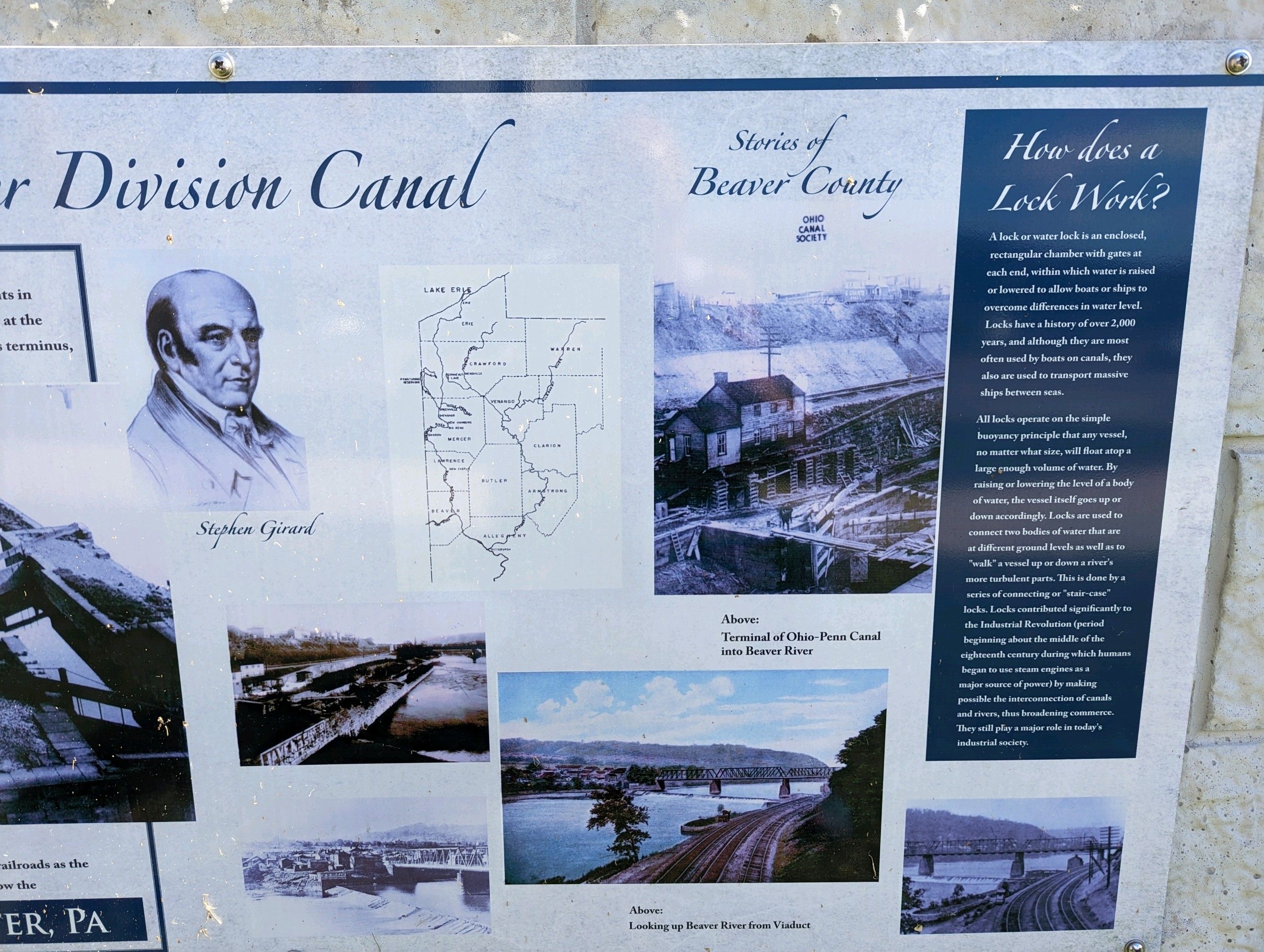Photograph as originally submitted to
this page in the Historical Marker Database
www.HMdb.org.
Click on photo to resize in browser. Scroll down to see metadata.
Photographer: Mike Wintermantel
Caption:
Girard Locks of the Beaver Division Canal Marker | Additional Description:
Right Side Images
Stephen Girard
Above: Terminal of Ohio-Penn Canal into Beaver River
Above: Looking up Beaver River from Viaduct
How does a Lock Work
A lock or water lock is an enclosed, rectangular chamber with gates at each end, within which water is raised or lowered to allow boats or ships to overcome differences in water level. Locks have a history of over 2,000 years, and although they are most often used by boats and canals, they are also used to transport massive ships between seas.
All locks operate on the simple buoyancy principle that any vessel, no matter what size, will float atop a large enough volume of water. By raising or lowering the level of a body of water, the vessel itself goes up or down accordingly. Locks are used to connect two bodies of water that are at different ground levels as well as to "walk" a vessel up or down a river's more turbulent parts. This is done by a series of connecting or "stair-case" locks. Locks contributed significantly to the Industrial Revolution (period beginning about the middle of the eighteenth century during which humans began to use steam engines as a major source of power? by making possible the interconnection of canals and rivers, thus broadening commerce. They still play a major role in today's industrial society.
Submitted: September 26, 2022, by Mike Wintermantel of Pittsburgh, Pennsylvania.
Database Locator Identification Number: p680283
File Size: 1.253 Megabytes
To see the metadata that may be embedded in this photo, sign in and then return to this page.
